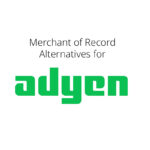
Choosing: Payment Facilitator vs. Merchant of Record for Your Business
In today’s rapidly changing eCommerce and online business landscape, the payment processing model chosen will have a significant influence on your business. To further clear the fog in the subject matter, there have emerged two popular alternatives – the payment facilitators (PayFacs) and the Merchants of Record (MoRs). Entrepreneurs and businesses need to understand and appreciate the finer differences between the two in order to maximize profit and operational efficiency.
This article guides the reader to make the choice among a Merchant of Record and a payment facilitator. We will examine the unique benefits and drawbacks of each, keeping in mind the particular requirements and conditions of your company. Whether you’re an established business seeking compliance and scalability, or a startup searching for a simple way to accept payments, this article will provide you with the information you need to make an informed choice.
Understanding PayFac vs Merchant of Record
PayFac and MoR are two distinct ways of processing payment. The PayFacs are mostly considered by SMBs (small and medium sized businesses) or startups. That is because they simplify payment collection and make the process smooth and quick. They are also easier to onboard. MoRs, on the other hand, act as the primary merchant for payment processing, taking full risk and chargeback handling responsibility while being accountable for risk management and compliance. PayFacs are quick and easy to use, but MoRs offer full services and regulatory compliance. There are numerous factors that can impact your choice to select one over the other. For example, your company domain, size, financial strategy, compliance requirements, and more.
What to Consider when Selecting?
When selecting a PayFac versus an MoR for your business, these are the factors you should keep at the forefront of your decision:
Business Size & Growth
The scale and growth direction of your business is also an important factor. PayFacs better suit SMEs for quick and easy setup. MoRs are more suited to handle the multiple needs of larger enterprises having a high volume of transactions.
Industry & Compliance Requirements
The medical and finance industries usually are more heavily monitored. MoRs generally provide more help to deal with these compliance issues. Companies operating in less heavily regulated sectors may find PayFacs more suitable.
Risk Tolerance
If you are a small business considering Payment Facilitator vs Merchant of Record, onboarding PayFac is going to be the more convenient option for you. Usually, a PayFac shares risk with their sub-merchants. On the other hand, MoRs take more risk on themselves, which can be good but may come with more stringent risk management practices.
Transaction Volume and Scaling
Consider your predictable transaction volume and growth plans. PayFacs can be a money-making choice for companies with modest transaction volumes, while MoRs are comparatively better suited for high-volume companies with scalability in mind.
Payment Flexibility
PayFacs may have boundaries on the types of payments they can accept or the geographic locations they can serve. MoRs absorb more risk on their balance sheet, which can have advantages but may also warrant more stringent risk management practices.
Control & Customization
Payfacs may offer limited customization options, while MoRs permit more control over the payment experience, branding, and customer data. Just consider how much control you want over these aspects.
Regulatory & Compliance Considerations
Regulatory and compliance considerations are crucial when choosing between a Payment Facilitator (PayFac) and a Merchant of Record (MoR). PayFacs often bring compliance responsibilities onto sub-merchants. This can reduce the administrative workload for the businesses, but then they have to vigilantly carry out a selection process to ensure the compliance of the sub-merchants.
On the other hand, MoRs usually play a more significant role in regulatory compliance, making them a profitable choice for businesses operating in highly regulated industries. MoRs take compliance obligations directly, thus offering convenience to businesses that wish to maintain strict observance of industry guidelines and standards. The decision between the two models should reflect your preparedness and ability to manage compliance requirements in your particular business niche.
Transitioning from One Model to Another
In the B2B subscription business market, retailers need to improvise pricing strategies and sometimes models with time. So, if you are using PayFac, at some stage, you will probably decide to transition to merchant of record. It is a business decision which requires thorough research and planning before implementation.
It generally involves migrating financial data, revamping of business operations, and making sure that the customer experience remains frictionless. Migrating from PayFac to MoR means that your business will experience sterner compliance, and you will carry out more advanced risk management. On the other hand, going from MoR to PayFac may reduce some workload on administration. However, it may still require some changes to be carried out. Such as adjustments in the payment process to suit your business needs, or in the configuration options.
This was a brief comparison of Merchant of Record vs PayFac. If you have decided that you need a merchant of record for your business, contact SubscriptionFlow or schedule a demo today. We are reliable MoR providers who are just a call away.









